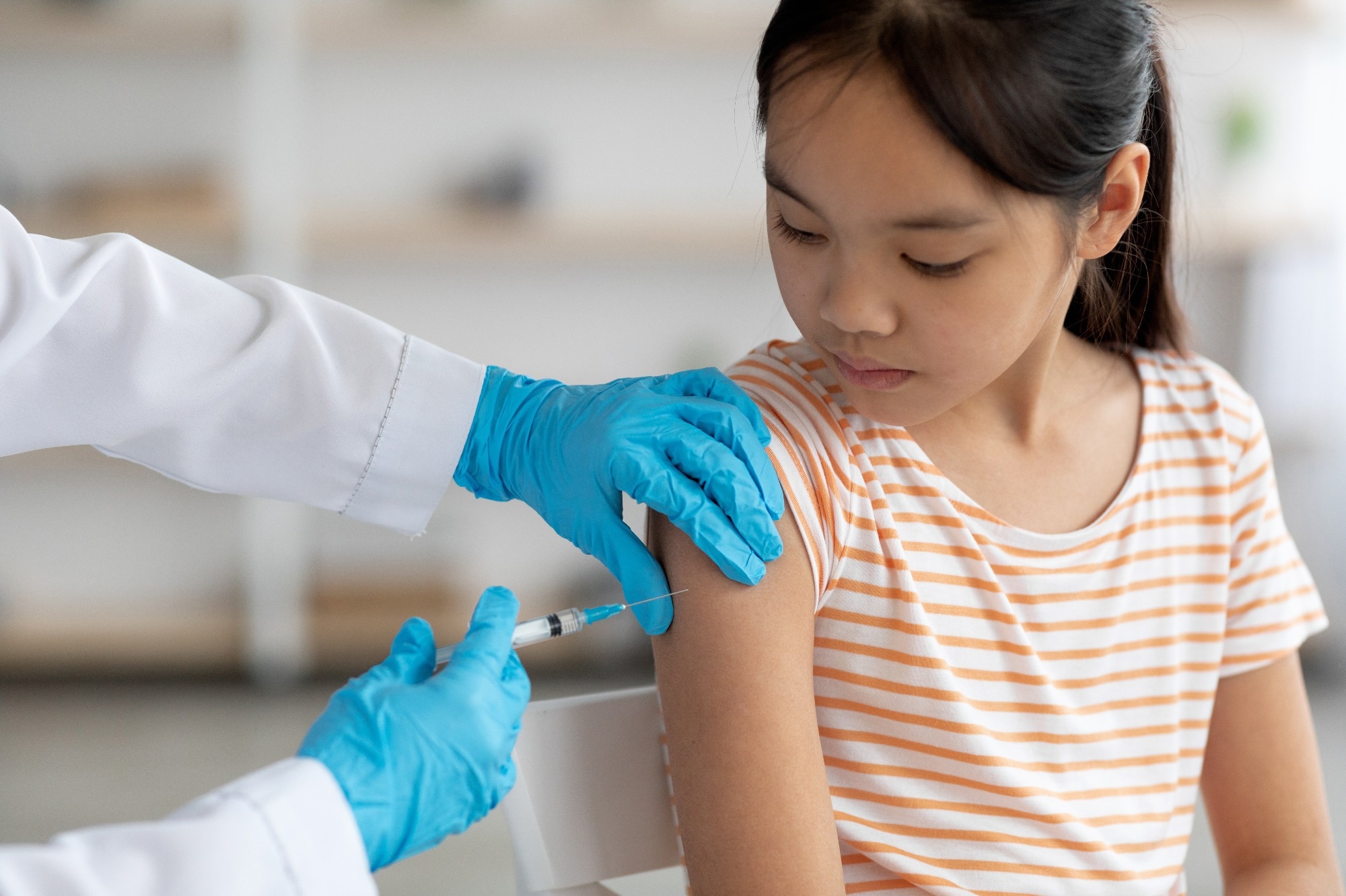In a recent study published in the journal JAMA Network Open, researchers investigated whether the coronavirus disease 2019 (COVID-19) vaccine for adolescents between the ages of 12 and 15 years, which was approved in May 2021, was associated with changes in the incidence of severe acute respiratory syndrome coronavirus 2 (SARS-CoV-2) and related hospitalizations among the pediatric population in California, United States (U.S.).
 Study: COVID-19 Vaccination and Incidence of Pediatric SARS-CoV-2 Infection and Hospitalization. Image Credit: Prostock-studio/Shutterstock.com
Study: COVID-19 Vaccination and Incidence of Pediatric SARS-CoV-2 Infection and Hospitalization. Image Credit: Prostock-studio/Shutterstock.com
Background
The spread and severity of the COVID-19 pandemic have been successfully controlled due to the rapid development of vaccines against SARS-CoV-2 and concerted efforts worldwide to vaccinate adult and at-risk populations.
The messenger ribonucleic acid (mRNA) vaccines against SARS-CoV-2, developed largely by Moderna and Pfizer BioNTech, were widely used for the adult populations.
Since children and adolescents were not found to be at a high risk of severe COVID-19, developing vaccines for the younger populations was of secondary priority during the peak periods of the pandemic.
However, in May 2021, the first mRNA COVID-19 vaccine for adolescents between 12 and 15 years was approved. In the subsequent months, vaccines for children between the ages of five and 11 years and six months and five years were also approved.
Although these vaccines are safe, vaccine hesitancy because of parental concerns about safety and adverse effects, and perceptions of reduced severity of the infection among children have resulted in low vaccine uptake among the younger populations.
About the study
In the present study, the researchers examined whether the COVID-19 vaccine for adolescents impacted the incidence of SARS-CoV-2 infection and hospitalizations among the pediatric population in California.
A better understanding of the impact of the vaccine in lowering incidence rates, reducing the severity of the disease, and mitigating the need for hospitalization is essential in formulating future public health policies on booster doses and developing vaccines against emerging SARS-CoV-2 variants.
The researchers analyzed deidentified data for close to four million pediatric COVID-19 cases and over 12,000 hospitalizations from California.
The outcomes associated with COVID-19 vaccination, including the incidence of SARS-CoV-2 infections and hospitalizations, were analyzed for each county and state according to the vaccine introduction phases for the three age groups.
The deidentified data contained age, county of residence, and hospitalization status information. A polymerase chain reaction (PCR) test was required to confirm COVID-19.
For the statistical analyses, the researchers grouped the cases based on county of residence, as well as age groups according to vaccine eligibility.
Furthermore, the data for each age group was also divided into periods of vaccine ineligibility and eligibility, and the outcomes were evaluated from a month after the vaccination until the analysis of the data or the beginning of the vaccine eligibility period for the next age group.
Results
The results suggested that the COVID-19 vaccine effectively limited the transmission of SARS-CoV-2 among the pediatric population in California.
The analysis found that close to 380,000 COVID-19 cases and 273 hospitalizations among children between the ages of six months and 15 years were averted in four to seven months after the availability of the vaccine. These numbers represent 26% of the cases in the pediatric population.
The researchers stated that their results among the pediatric population were similar to those from various U.S. and Israeli studies reporting the effectiveness of the COVID-19 vaccine in averting a substantial number of COVID-19 cases among the adult population.
The positive impact of the COVID-19 vaccine was found to be the highest among children between the ages of 12 and 15 years.
Among children ages six months to five years, the reduction in the number of COVID-19 cases was not found to be significant. However, the researchers believe this could be because of low transmission rates of the variant circulating during the evaluation period for that age group.
Notably, despite the vaccination coverage being just above half (53.5%) among adolescents between the ages of 12 and 15 years and even lower among children below 12, a total of 376,085 cases of COVID-19 were averted in California.
These findings highlight the effectiveness of the COVID-19 vaccine in lowering the incidence and severity of SARS-CoV-2 infections and limiting the transmission of the virus among children and adolescents.
Conclusions
To conclude, the study found that despite just over 50% vaccination coverage, the COVID-19 mRNA vaccine approved for use among adolescents and children in the U.S. averted close to 400,000 cases among the pediatric population.
These results highlighted the importance of the COVID-19 vaccine in protecting individuals of all age groups against SARS-CoV-2 infections. Furthermore, these findings also support future public health decisions to administer booster doses.
Journal reference:
-
Head, J. R., Collender, P. A., León, Tomás M, White, L. A., Sud, S. R., Camponuri, S. K., Lee, V., Lewnard, J. A., & Remais, J. V. (2024). COVID-19 Vaccination and Incidence of Pediatric SARS-CoV-2 Infection and Hospitalization. JAMA Network Open. doi:https://doi.org/10.1001/jamanetworkopen.2024.7822. https://jamanetwork.com/journals/jamanetworkopen/fullarticle/2817868